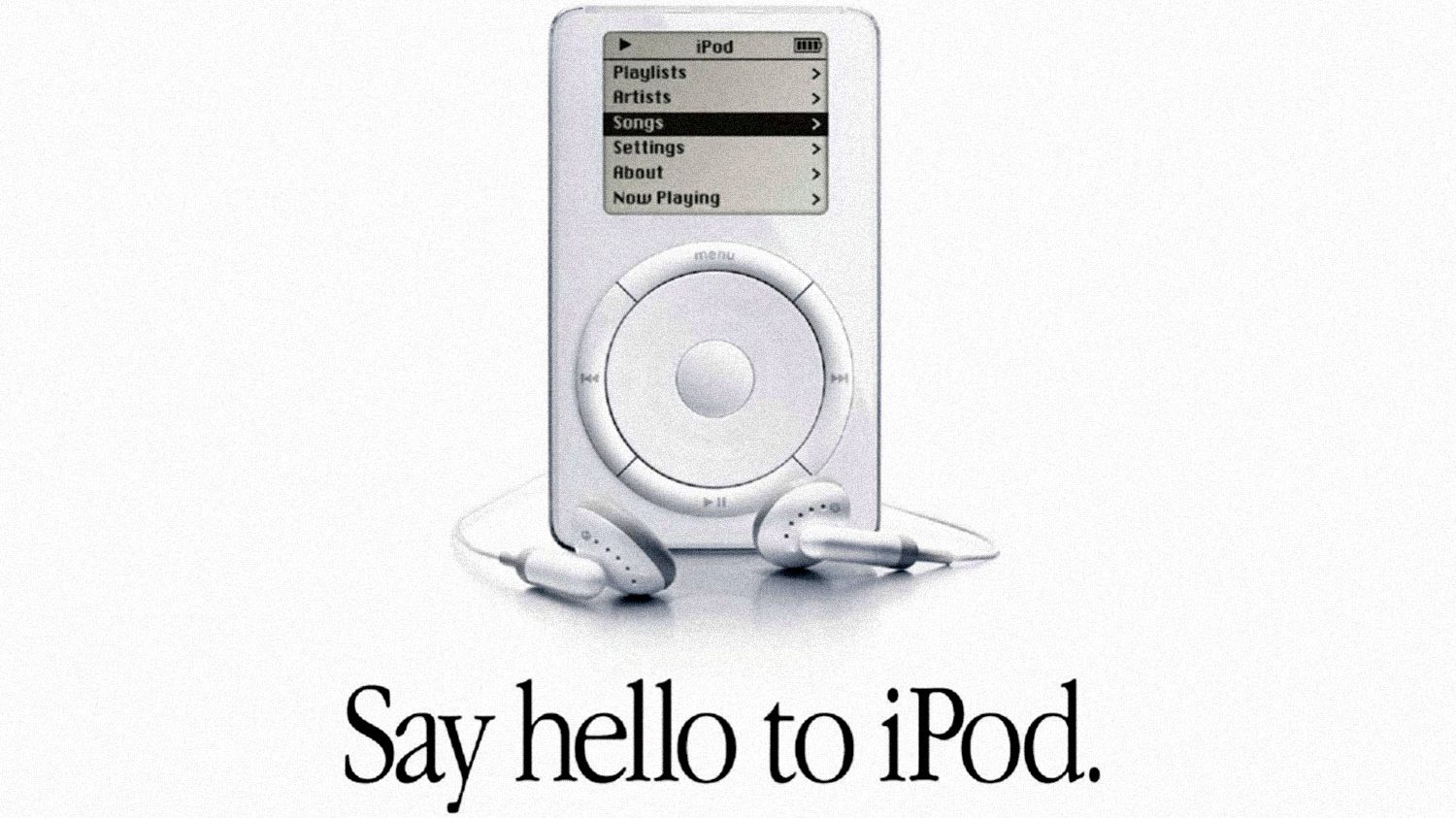
20 years ago today Apple released the iPod. We look at the rise and fall of the device and why there’s never been a better time to buy one.

The iPod transformed the way we listened to music, acting as a precursor to the streaming revolution, a revolution I believe has run its course. Today it mourns its 20th birthday.
We’ve all had our fun with the ultra convenient and universally accessible subscription services such as Spotify and Apple Music and, whilst I’m not suggesting we stop using them completely because their unique benefits are inarguable, we can salvage some form of the emotional attachment to offline music libraries the iPod was the final guardian of.
Offline listening removes the distraction of the internet, social media, and targeted ads…
Offline listening coupled with certain activities that are provably enhanced by music removes the distraction of the internet, social media, and targeted ads, transforming you back into the pre-cyborgian state you once were (unless you’re a Gen Z then the transformation will be to a new state).
How? Buy an old one, load it up with some music and untether yourself periodically from the access-anywhere dopamine grid that is 4G/5G streaming.
In 1999, CDs made up over 80% of music revenue. You could listen on a big stereo, a portable CD player or rip an entire album to your computer. But CD and early portable media players had loads of issues, they were big and clunky, would often skip during playback, and neither held many songs.
Apple saw this as an opportunity. It considered the competition totally inadequate, and it wanted to create something that was smaller and more powerful.

Bono featuring in one of the early iPod commercials
But even Apple didn’t know exactly what this device was until its former head of hardware, Jon Rubinstein met with Toshiba at a Macorld Expo in Tokyo. Rubinstein was shown a 1.8 inch harddrive, which was incredibly small for the time. This new hard drive combined storage and portability exactly what Apple was looking for. Apple’s new media player was now possible.
It was launched in October 2001, following an announcement at the company’s launch event chaired by Steve Jobs (check out the Comic Sans font on the PowerPoint presentation, a far cry from the sleek seances we see today).
The iPod became the face of portable mp3 players, making it really difficult for anyone else to compete. It also convinced people that if you like iTunes and you like your iPod so much, then maybe you’d like using a Mac too!
So what precipitated the collapse of Apple’s premier music device? Well, Apple did, by releasing the iPhone. The rise of the iPhone and the fall of the iPod have a direct relationship. iPod sales began to decline in 2008, while the iPhone’s growth was massive. At the time, Apple was still releasing new models of the iPod, but it would soon abandon its own product before, in 2009, then-CFO Peter Oppenheimer said: “We expect our traditional mp3 players to decline over time as we cannibalise ourselves [my emphasis] with the iPod touch and iPhone.”
Offline music on the new iPhone preceded the eventual online music function on the same device, and as superfast LTE 4G technology allowed listeners to tune in from anywhere, we moved into the access-any-music-anywhere lives we now inhabit.
And it is miserable.
We walk around checking our ‘phones’ (a silly, outdated term for these devices, it’s like calling your laptop a typewriter) every ten seconds and giving in to fast-twitch impulses. We change the songs we’re listening to as soon as our mood changes, sit fit that mood, or vice versa. If you’re one of the very few people who don’t have this problem, my hat goes off to you, but for me the solution was a hardware fix.

Soptify’s great, but it isn’t the only listening experience
Many activities that are made better with music such as working out, cooking, walking and travelling are even better when you don’t have distractions competing for your attention, whenever the whim directs you. A focus emerges, and you sink into your groove much more quickly and deeply. Who knows what long-term neurological changes we’re sleepwalking into by depriving ourselves of this soundtracked, uninterrupted meditation?
The myth of progress, and the smartphone, has put convenience on a pedestal.
You can buy second hand iPods for peanuts before ripping old CDs, Audible audiobooks and podcasts onto them. Why bother? Because doing this prior to leaving the house will mean you prepare your listening experience in advance, naturally putting more thought into it. You grow used to listening to full albums from start to finish, how the artists wanted them to be listened to, and do away with bit-part track browsing, which can often be a very discordant affair and waste precious seconds in selecting the next song, disrupting whatever aforementioned activity you’re midway through.
The myth of progress, and the smartphone, has put convenience on a pedestal. We liked it, but after a decade we’re beginning to see the unpredictable consequences of the way we engage with music. It’s almost invisible until a conscious effort is made to reverse it, which few do. But if you’re a curious, discerning explorer of music – and I think the average whynow reader is – rather than a mere consumer, I suggest you take the long way round, and cherish what you find there.




